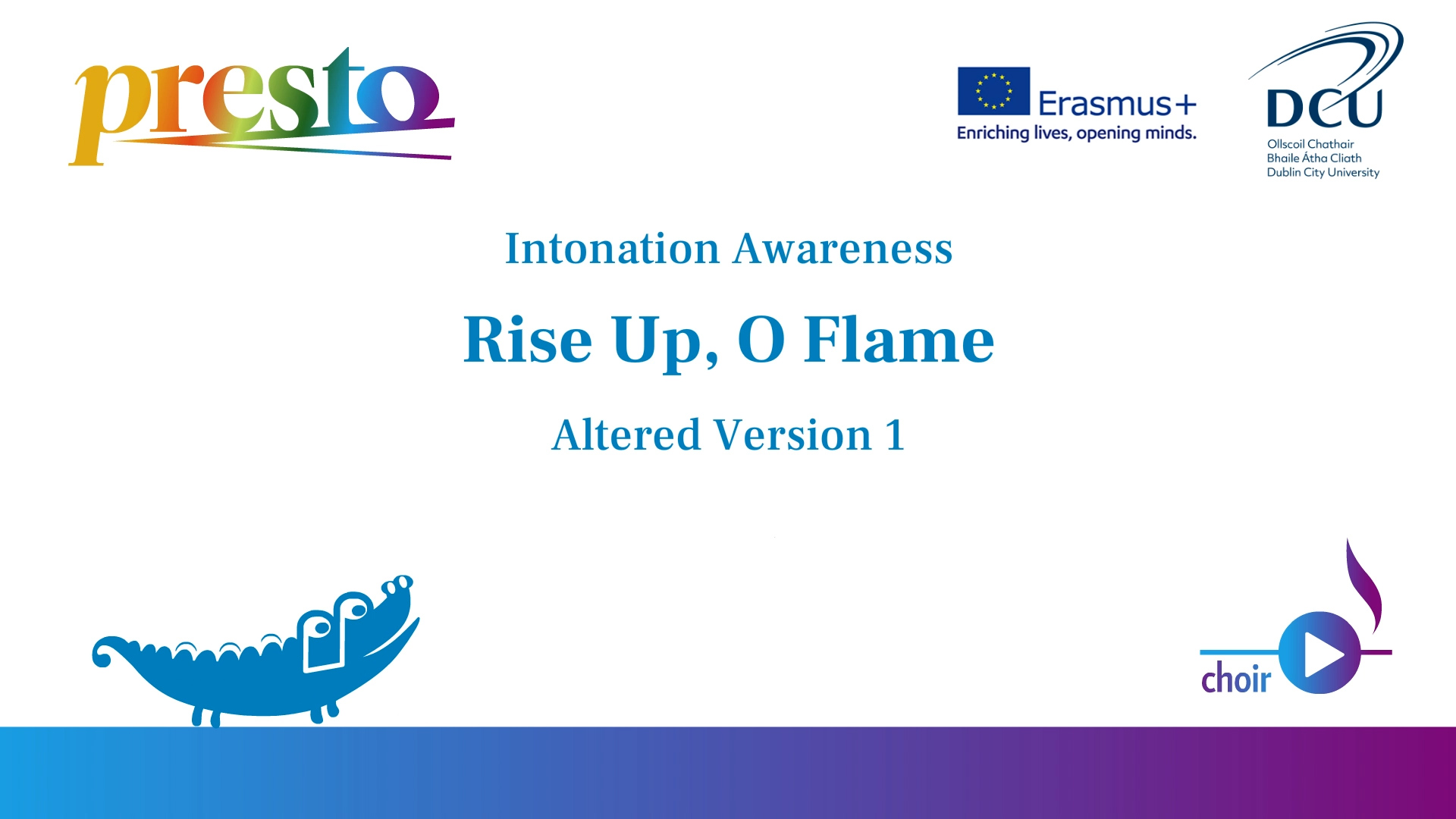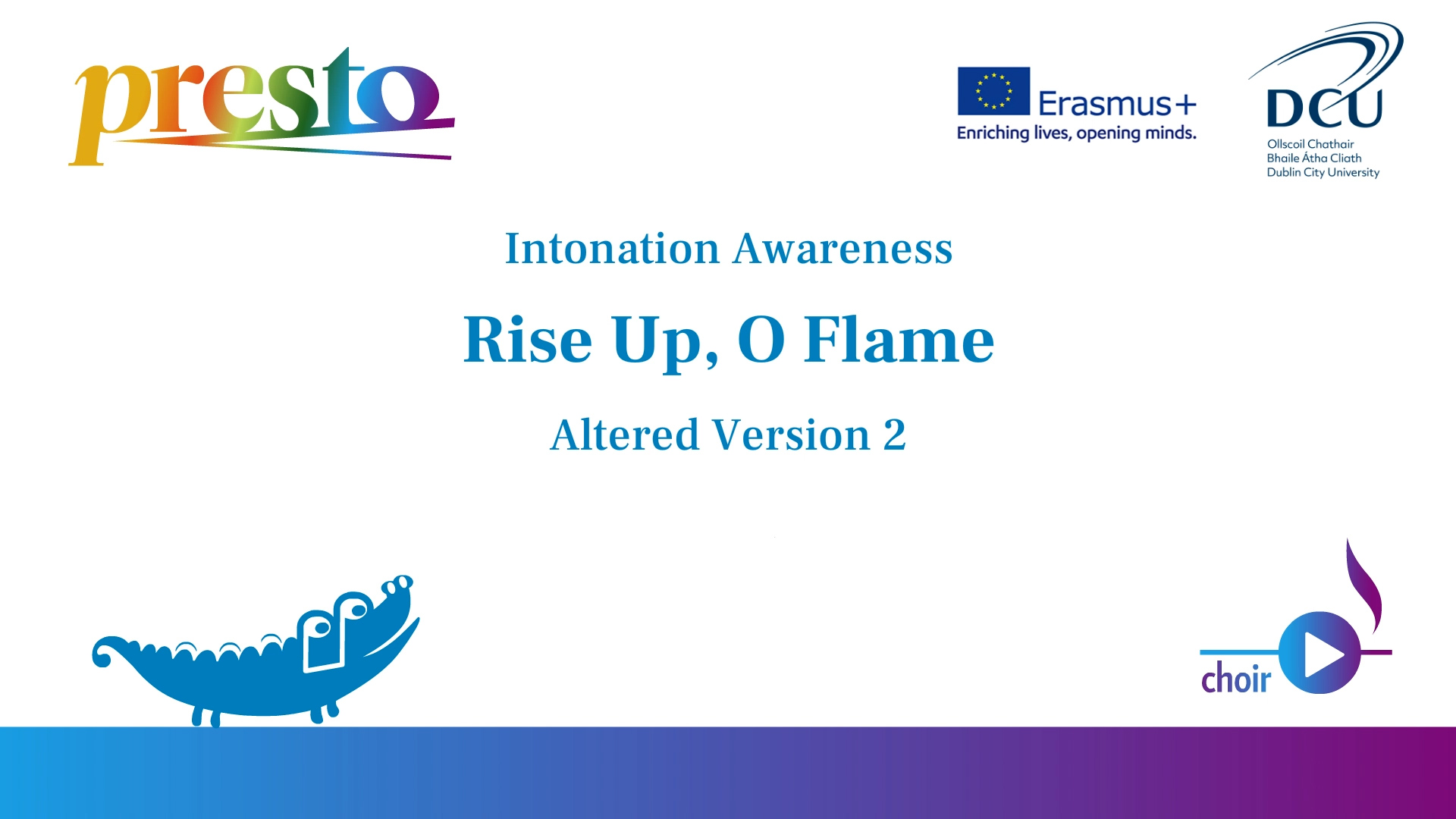To explore this melody further and use it to develop your musical skills in a practical way, go to ‘Rise Up, O Flame’ in the Canons section of PRESTO
Altered Version 1: Details
Problem: The pitch drops on the descending lines in bars 2 and 6.
Possible solutions:
- The conductor keeps in mind that ‘descending melodies, especially in the minor mode, require special attention in regard to intonation’ (Per-Gunnar Alldahl, Choral Intonation, p. 39) and guides the singers in counteracting this ‘pull of gravity’, through excellent demonstration in singing, verbal explanation, and conducting gesture.
- During the teaching process, the conductor uses exercises that strengthen the singers’ feeling for the triad of chord I, on which this canon is based. Exercises that involve secure, well-tuned singing of the key note (la), the fifth (mi), and the third (do) can provide a good stepping stone.
- The rhythm of bars 2 and 6 is practised well, to avoid hesitation that could impact the quality of singing and overall clarity and momentum of the piece.
Altered Version 2: Details
Problem: The pitch drops at the repeated notes in bar 5.
Possible solutions:
- As music theorist Per-Gunnar Alldahl points out: ‘if sung too passively a repeated tone has a tendency to be lower’ (Alldahl, Choral Intonation, p. 9). The conductor guides the singers with awareness of the need for care and momentum in singing repeated notes, and uses fluent, supportive gestures in conducting this motif.
- The conductor draws attention to the connection between bar 1 and bar 5, which are an octave apart, and encourages the singers to create a well-prepared, shining tone on the higher la throughout bar 5, and onwards to the end of the piece.
- A strong foundation in feeling the fifth (mi) and the octave (la) in relation to the starting note (la) is created through exercises and demonstration, and singers are encouraged to shape these notes with energy and sensitivity to help create momentum and tonal connection throughout.





